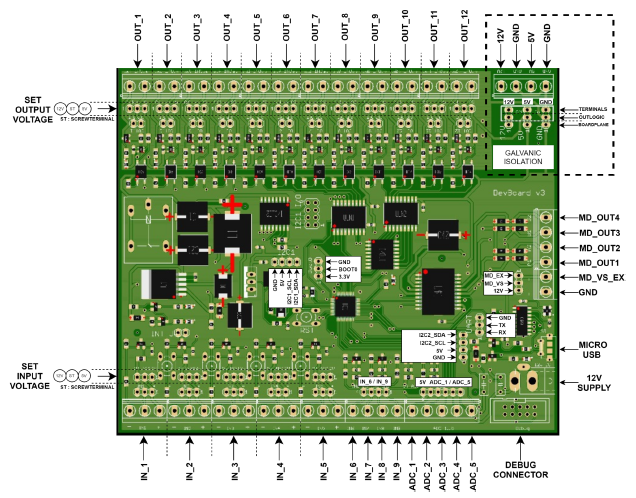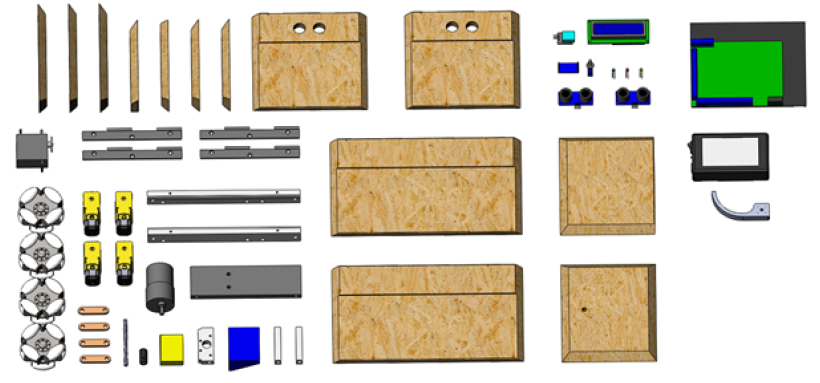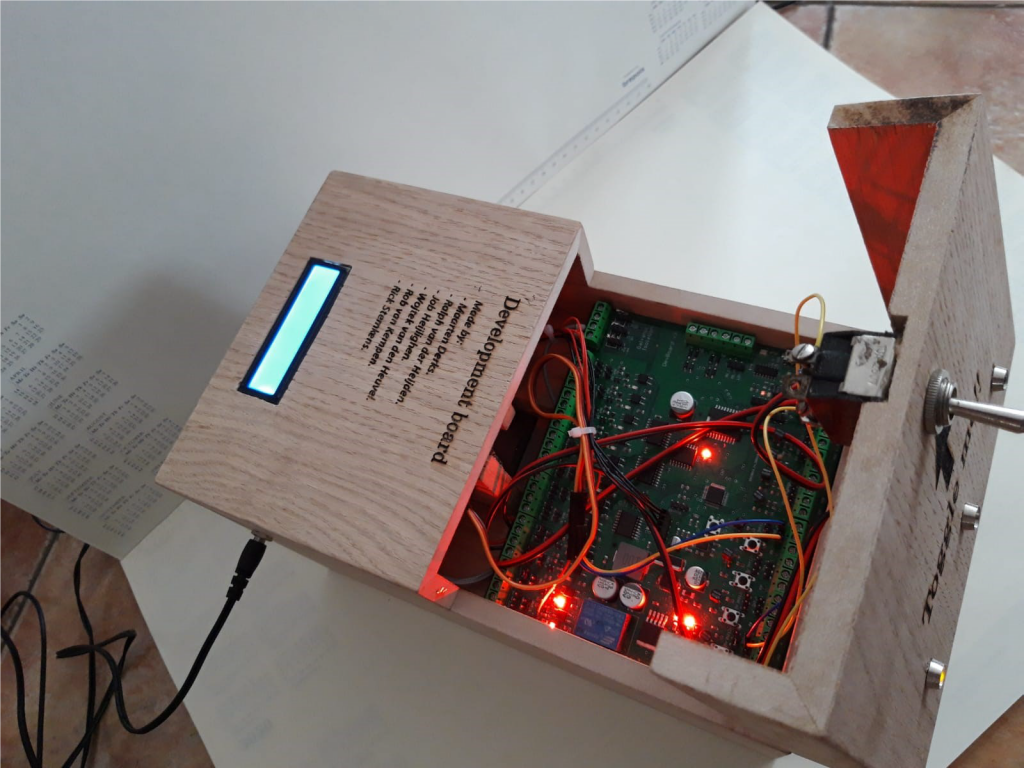The BeCreative minor promotes creativity, and gives a lot of freedom within the minor. With this in mind, the Development Board minor group submitted its own project proposal within the minor.
The initial idea was very broad, and a real end product or application was not yet known. What we did know is that we wanted to go through the whole design process in which everyone in the group would learn about designing electrical schematics, choosing components, PCB design, assembly and testing.
In February 2020 we started the minor, the project was named Development Board and the goal is to design, produce and eventually test and validate a PCB with peripherals with an actual application.

Project description
In the beginning of the project, we quickly realized the first prototype PCBs. This gave the group a lot of insights because circuits were designed and physically tested right away.
Realizing the development board has been a super nice and educational assignment for all of us. The mechatronics students Job, Maarten, Rick have learned a lot about software and PCB design and PCB debugging. Wojtek as an electrical engineering student also learned about software and the debugging of a PCB. Ralph had a totally different background and learned a lot in electronics.
In the end we all learned from the whole process, from nothing to a total design. Searching for errors has brought a lot of frustration, but it has also taught us a lot. Altogether, there was a good combination of areas of expertise within the project group.
With the knowledge we gained we are able to design and produce a reasonably complex PCB, that contains (among other things) a power supply, an STM32 microprocessor (including software with many driver modules), and many I/0 ports with protections. As a group we are very proud of this achievement!
Application: Useless Box
The goal is to design an interactive product that can be controlled by the user and through the software programming conveys different actions. A smart product that does not have a standard. The different sensors and buttons needed for this application are easy to connect to the development board. The “Useless Box” application was chosen because it has the following characteristics:
- It is creative.
- Many different options are possible (shape, color, material, size to be determined by yourself).
- A good fit with the development board.
- Interactive product looks simple, but inside it is a lot more difficult.
- Opportunities for everyone in the group to learn and develop.
The figure below shows all the parts needed to realize the useless box, in combination with the sensors and motors.

Here is an overview of the parts required for our “Useless Box” application:
- The box itself
- A lift system
- Undercarriage with mecanum-wheels
- TT 1:48 DC motors
- RB350100-0A101R DC engine
- MG-995 Servo engine
- Onboard DC12480 battery
- LCD display (162LCDBLACK)
- LED ilumination (Red, Yellow and Green)
- The Development Board
- Ultrasonic sensor (HC-SR04)
- Acceleration sensor (ADXL345)
- Moisture/temperature sensor (DHT-11)
Based on the drawings, the product can be produced and assembled. Then the software can be downloaded to make the application work.
Project results
Below is a photograph of the final product (the Useless Box) with the 2nd version of our development board inside. In the video that follows, you’ll see it working!
